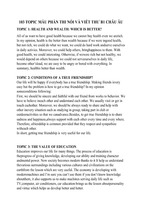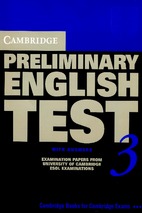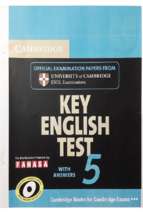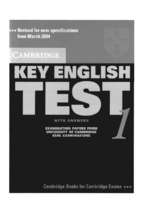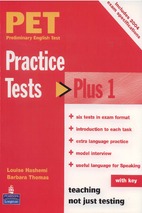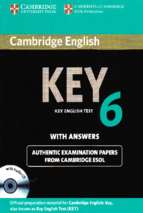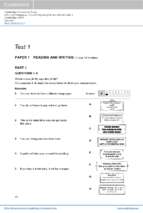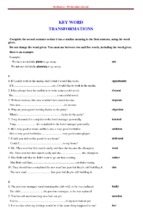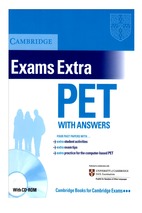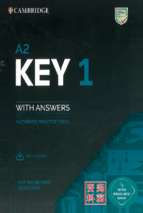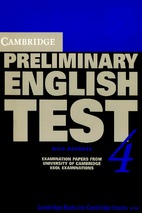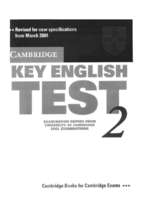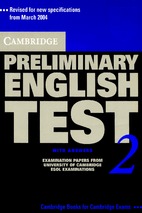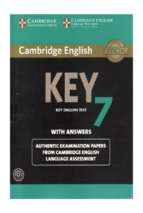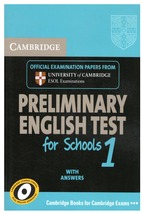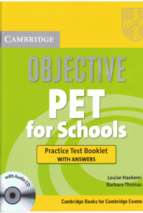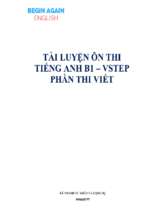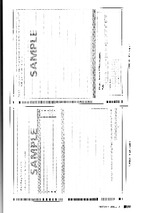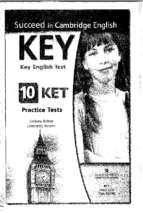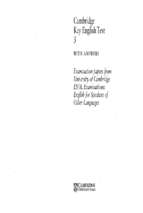VIET NAM NATIONAL UNIVERSITY, HANOI
UNIVERSITY OF LANGUAGES AND INTERNATIONAL STUDIES
FACULTY OF GRADUATE STUDIES
NGUYỄN VĂN KẾT
A SURVEY OF THE CLASSROOM USE OF THE NEW ENGLISH
TEXTBOOKS AT A HIGH SCHOOL
(Khảo sát việc sử dụng sách giáo khoa tiếng Anh mới
tại một trường THPT)
M.A. MINOR PROGRAMME THESIS
Program 1
Major: English Language Teaching Methodology
Code : 8140231.01
HANOI – 2020
VIET NAM NATIONAL UNIVERSITY, HANOI
UNIVERSITY OF LANGUAGES AND INTERNATIONAL STUDIES
FACULTY OF GRADUATE STUDIES
NGUYEN VAN KET
A SURVEY OF THE CLASSROOM USE OF THE NEW ENGLISH
TEXTBOOKS AT A HIGH SCHOOL
(Khảo sát việc sử dụng sách giáo khoa tiếng Anh mới
tại một trường THPT)
M.A. MINOR PROGRAMME THESIS
Program 1
Major: English Language Teaching Methodology
Code: 8140231.01
Supervisor: ASSOC.PROF. Le Van Canh, Ph.D
HANOI – 2020
DECLARATION
I, Nguyen Van Ket, hereby certify that my thesis submitted to the
Faculty of Post- Graduate Studies, University of Languages and International
Studies, Vietnam National University, apart from the help recognized, is my
own work. Documented references have been fully provided. I have not
submitted this thesis for assessment in any other training institutions.
Hanoi, 2020
Nguyễn Văn Kết
Approved by
SUPERVISOR
(Signature and full name)
Date: …………………….
i
ACKNOWLEDGEMENT
First and foremost, I would like to express my special and sincere thanks
to my supervisor, Dr Le Van Canh, who gave me enthusiastic instructions,
precious support and critical feedback on the construction of the study. This
has always been one of decisive factors in the completion of this thesis.
Second, I also express my profound gratitude to all doctors, lecturers
and staff members of the Faculty of Postgraduate Studies, University of
Foreign Languages and International Studies, Vietnam National University,
Hanoi for their valuable lectures and useful advice that are a great help me for
the fulfillment of the thesis.
Next, I would like to send my deep sense of thanks to the teachers and
students at the high school in Hanoi for their cooperation and the valuable
information they provided in my research field.
Furthermore, I would like to send my heartfelt gratitude to my family
and all of my friends who have great source of endless care and support.
Last but not least, I am also thankful to many writers whose ideas are
useful hints for the development of this thesis.
ii
ABSTRACT
The thesis focuses on surveying the classroom use of the new English
textbooks at a high school. To achieve the research objectives, the author
interviewed 04 English teachers and attended 06 English lessons of grades 10,
11 and 12 at a high school in Hanoi. After collecting the primary data
combined with the study and referring to the secondary data, the author found
that the new English textbook has many advantages over the old textbook,
both in form and content. New textbooks focus more on communication
activities, activeness and creativity of students. Its knowledge is also updated
and closer to the students' daily lives. However, the difficulty in teaching new
textbooks is quite a lot, from students, teachers, teaching methods, facilities
and forms of exam and tests. Based on such limitations, the author proposes a
number of solutions for students, teachers, professional groups, schools and
the Ministry of Education and Training to help implement the new English
textbook program to be more convenient and efficient in the future.
iii
LIST OF ABBREVIATIONS
MOET
: The Ministry of Education and Training
TESL
: Teaching English as a Second Language
TEFL
: Teaching English as a Foreign Language
EFL
: English as a Foreign Language
CLT
: Communication Line Terminal
CD
: Compact Disc
IELTS
: International English Testing System
TOEFL
: Test of English as a Foreign Language
ELT
: English Language Teaching
iv
TABLE OF CONTENTS
DECLARATION .............................................................................................. i
ACKNOWLEDGEMENT .............................................................................. ii
ABSTRACT .................................................................................................... iii
LIST OF ABBREVIATIONS ....................................................................... iv
TABLE OF CONTENTS................................................................................ v
CHAPTER 1. INTRODUCTION .................................................................. 7
CHAPTER 2. REVIEW OF LITERATURE ............................................. 10
2.1. The role of textbooks in English language teaching ................................ 10
2.2. Previous studies related to using textbooks in English language teaching .. 13
2.3. The current high school context ............................................................... 17
2.3.1. The general context in Vietnam ............................................................ 17
2.3.2. New English textbooks at high school in Vietnam ............................... 22
CHAPTER 3. METHODOLOGY ............................................................... 27
3.1. Research design ........................................................................................ 27
3.1.1. Research setting .................................................................................... 27
3.1.2. Participants of the study ........................................................................ 28
3.2. Research instruments ............................................................................... 28
3.2.1. Interview................................................................................................ 28
3.2.2. The classroom observation.................................................................... 30
3.3. Procedure .................................................................................................. 31
3.3.1. Data collection process ......................................................................... 31
3.3.2. Procedure of data analysis..................................................................... 31
CHAPTER 4. FINDINGS AND DISCUSSION ......................................... 33
4.1. Findings of employed interviews and classroom observation ................. 33
4.1.1. Interview findings ................................................................................. 34
v
4.1.2. Classroom observation findings ............................................................ 38
4.2. Discussion ................................................................................................ 42
CHAPTER 5. CONCLUSION ..................................................................... 46
5.1. Summary of findings ................................................................................ 46
5.2. Recommendations for more effective use of the new textbook............... 48
5.2.1. For the teachers ..................................................................................... 48
5.2.2. For the administrators ........................................................................... 51
5.3. Limitations and suggestions for further research ..................................... 53
5.3.1. Limitations ............................................................................................ 53
5.3.2. Suggestions ........................................................................................... 54
5.4. Conclusion................................................................................................ 55
RERERENCES.............................................................................................. 56
APPENDICES .................................................................................................. I
vi
CHAPTER 1. INTRODUCTION
1. Rationale for the study
In an attempt to improve the quality of English language learning and
teaching at the high school, the Ministry of Education and Training (MOET)
has recently introduced a new series of textbooks. These new textbooks are to
promote communicative learner-centered teaching. It has been claimed that
the new textbooks will help teachers to change their teaching toward a greater
emphasis on communication and learner-centered method. However, the
practical information about how the prescribed change affects teachers,
students, and the school as well as how teachers respond to such prescribed
change has not been researched much. This study is an attempt to look into
the issue more empirically. Moreover, many teachers and students shared that
they found it difficult to teach with the new textbooks and they have no
solutions to overcome, certainly, lessons with new English textbook 10, 11
and 12 cannot be successful and it even becomes worse. This has a great
effect on students‟ learning results. On the other hands, students will be fed
up with learning English if they find it worthless to study this subject.
For all these reasons, it is required to find out difficulties in teaching
English subject to the 10th,11th and 12th students at the high schools and the
solutions. Therefore, the author decided to choose the topic “A survey of the
classroom use of the new English textbooks at a high school”.
2. Aim and objective of the study
The specific aims of the study are:
- To explore how teachers use the new textbooks in their classroom.
- To identify the gap between the method underlying the textbooks and
the teacher‟s actual methodology, if any.
7
3. Research questions
Based on the above aims, this research is conducted to answer the
following questions:
1. How do teachers use the new English textbook in their classroom
and to what extent does their methodology match the textbook‟s intended
method?
2. What factors shape the way teachers use the new textbook in their
classroom?
4. Scope of the study
The investigation focuses on teachers in one high school in Hanoi using
the new textbooks for three different grades: Grade 10, 11 and 12.
5. Significance of the study
This project can be significant in a number of ways. First, the textbook
is a key component of most language programs, as discussed above. It can
also be the key source of language feedback obtained by students in the EFL
context like Vietnam and the cornerstone of language practice both within and
outside the classroom. For many Vietnamese high school students, textbooks
may also complement less than three hours per week of teacher education.
The textbooks must be professionalized, tailored to the curriculum and closely
align the aims of the teaching program and the needs of the students in order
to achieve their goals most effectively. A close look at new textbooks
sponsored by the MOET showed, however, that they may have some
problems. There may also be major difficulties for teachers and learners
working with a new textbook to attain the ultimative target of their education
and learning programmes, which improve student communication skills.
The current project helps to finding and proposes ways to strengthen
the issues. For authors, students, and teacher trainers in Vietnam, this
8
contribution would have practical value. The project also focuses on an
educational setting that is widely unheard and under-represented in the
worldwide TESOL bursary. The project report is therefore a rich source of
knowledge for scholars outside Vietnam for their use and reference.
Findings from this study can also be useful for textbook authors,
teacher educators and educational bodies in making appropriate decisions on
how English teaching in the high schools can be innovated. It can also
contribute to the popular understanding of the role of textbooks in innovation
in education.
6. Structure of the thesis
The study is divided into three parts:
Chapter 1 is the Introduction, which provides an overview of the
research with specific information about rationale for the study, aim and
objectives of the study, subject, scope and structure of the study.
Chapter 2 is the Review of literature, which presents a review of
theoretical background about new English textbook 10, 11 and 12 and a
review of previous studies related to the research.
Chapter 3 is the Methodology, which gives methodology underlying
the research and descriptions of data analysis. In terms of methodology, the
background information of the research questions, the subjects, the data
collection instruments, and data collection procedure are discussed.
Chapter 4 is the Findings and discussion, which summarizes the major
findings.
Chapter 5 is the Conclusion, which includes the recapitulation of the
main points presented in the thesis and concluding remarks; personal
recommendations for such current problems in teaching with new English
textbooks 10, 11 and 12. The limitations of the study and some
recommendations for further research are also discussed in this chapter.
9
CHAPTER 2. REVIEW OF LITERATURE
This chapter provides general information about the role of textbooks
in English language teaching, previous studies related to using textbooks in
English language teaching and the current high school context. This is
theoretical basis for the author to study others contents related to the
classroom use of the new English textbooks at a high school in the
following chapters.
2.1. The role of textbooks in English language teaching
The role of textbooks in language teaching and learning is extremely
important, and it is seen as a second important factor compared with teachers
in the second/foreign language classroom. "Teach textbook is an almost
universal aspect of English teaching", as indicated by Hutchinson and Torres
(1994, p.351). Millions of copies are sold annually and various support
programs have been developed to be produced in [several] countries... There
seems to be no teaching-learning situation until it has a specific textbook.
In many language classes, ELT textbooks play a very important role,
but there have been a lot of discussions across the whole ELT field over the
actual role played by textbooks for English as second/foreign language
teaching. Arguments include the ability and the drawbacks of textbooks for'
guiding' students through the course and curriculum and the expectations and
desires of educators using textbooks. Other issues that have arisen very
recently include textbook design and practicality, methodological validity,
and the role of textbooks in innovation. Nonetheless, there has been very little
research on the role of textbooks in ELT innovation.
Haycrof (1998) says that one of the main benefits of using textbooks,
because success and accomplishment can be assessed concretely when we use
10
it, is emotionally important for students. Sheldon (1988) has said that students
in his or her language classroom and program tend to use a textbook and feel
that written materials have more validity than teacher-generated or in-house
materials. O'Neill (1982) suggested that even if not specifically made for
him/her, the textbooks will be time and money efficient and that adaptation
and improvisation should be allowed. The report argues that it is an efficient
source for self-directed learning, an efficient tool for presenting information,
an insight and activities source, a guide for learners, a curriculum where predetermined learning goals are expressed, and supports those who are not yet
experienced in confidence. Hutchinson and Torres (1994) have claimed that
“the textbook is an almost universal element of [English language]
teaching…No teaching-learning situation, it seems, is complete until it has its
relevant textbook” (p. 315). They propose that textbooks should help teachers
through potentially confusing and challenging cycles of transition, show new,
untried methods, slowly implement changes, and provide a scaffolding that
enables teachers to build up their own innovative methodology.
Those advantages include their greater credibility in comparison with
teacher-generated materials or in-house materials (Sheldon, 1988), their
sensitivity to students‟ needs as well as their efficiency in terms of time and
money (O‟Neill, 1982). These advantages have been elaborated by Sheldon
(1988) that textbooks yield a respectable return on investment and relatively
inexpensive and involve low lesson preparation time, whereas teachergenerated materials can be time, cost, and quality defective. In this way,
textbooks can reduce potential occupational over-load and allow teachers the
opportunity to spend their time undertaking more worthwhile pursuits.
Given the undisputed benefits of language teaching textbooks listed
above, the constraints on textbooks are well known in the literature as well.
11
Allright (1981) notes that these constraints include inflexibility, the
discrimination of authors with respect to the underlying methods, the choice
of language contents and ignorance of the needs of learners. The teachers who
use them can, therefore "de-skill" the textbooks (Richards, 1998)..
Cunningsworth (1995) has suggested that textbooks are to be modified
rather than implemented in order to deal with these drawbacks of textbooks.
The advice is good enough, but it is a problem if all educators in the position
of consumers of textbooks have the skills they need to change the textbook. N
Reynaud, who has taught English for over 30 years (Admin, 2008), also finds
that textbooks are all right as a grammar "progression" so that school books
are perfect when the schedule of your lessons is "British literature”.
According to Riazi (2003, p. 52), "textbooks play a very crucial role in
the realm of language teaching and learning and are considered the next
important factor (element) in the second/foreign language classroom after the
teacher". The textbook is a tool in the hands of the teacher, and the teacher
must know not only how to use it, but also how useful it can be. The wealth of
published materials for English language teaching (ELT) available in the
market makes selecting the right course book a challenging task. Moreover,
the selection of a particular core textbook signals an executive educational
decision in which there is considerable professional, financial, and even
political investment (Sheldon,1988).
In certain cases, textbooks are the framework for many of the linguist's
guidance and language learning in the classroom. The framework for the
content of the lessons, the combination of skills and the language tasks that
students regularly use can be given. In other cases, textbooks can only be used
for the teaching of the teacher. Learning books can also be used as teacher
training for educators in the case of new students, i.e. they include
12
suggestions about how to prepare and teach lessons, as well as templates for
teachers to use. Without the widespread use of commercial textbooks, most
language lessons currently taking place throughout the world cannot take
place. The teacher's technical expertise is therefore an integral part of learning
how to use and adapt textbooks (Richards, 2001).
2.2. Previous studies related to using textbooks in English language
teaching
The English language teaching (ELT) textbooks are critical. They have
to be sufficient for the context and the people with whom they are used to be
of value, utility and adequacy. Although textbook assessment literature is not
especially comprehensive, various authors proposed evaluation "checklists"
based on criteria, allegedly generic, that teachers and students can use in
many different situations. While Sheldon (1988) notes that there cannot be a
specific set of standards in all teaching and learning environments without a
major change, many of these standardized assessment lists have the same
elements which can be used in different situations as helpful starting points
for ELT practitioners. In the field of ELT, theorizers such as Williams (1983),
Sheldon (1988), Brown (1995), Cunningsworth (1995) and Harmer (1996) all
agreed that assessment checklists should have some physical requirements
relating to textbook features, such as format, structure and logistics. We can
list some researches related to use textbook in English language teaching as
follows:
David (2014) studied about “Textbook evaluation and ELT
management: A South Korean case study”, Asian EFT Journal, UAE
University Al Ain. ELT materials (textbooks) played a very important role in
many language classrooms. Arguments also encompassed both the ability and
the drawbacks of materials for 'guiding' students through the learning process
13
and curriculum as well as the needs and desires of teachers who were using
textbooks. Whether or not one acknowledged the importance of textbooks, it
must certainly be with the qualification that they are of an acceptable standard
or level of quality and suitable to the learners for which they were being used.
It was therefore absolutely important that a wide range of pertinent criteria for
evaluating the textbooks we used in our language classrooms be developed
and enforced. This paper discussed and described the intricate and complex
evaluation process that was undertaken at Sung Kyun Kwan University in
Suwon, South Korea in 2000-2001 for a textbook (English Firsthand 2) that
was being used in this particular learning environment. The purpose of this
research project was to determine the overall pedagogical value and suitability
of the book towards this specific language program.
Seyede and Amin (2015) studied about “Textbook Evaluation: An
Investigation into “American English File Series”. ELT materials (textbooks)
played a really crucial role in many language classrooms, but in recent years
there has been a lot of debate throughout the ELT profession on the actual
role of materials in teaching English as a Second/Foreign Language
(TESL/TEFL). Some issues that have been discussed in recent years include
textbook design and practicality, methodological validity, the role of
textbooks in innovation, the authenticity of materials in terms of their
representation of language, and the appropriateness of gender representation,
subject matter, and cultural components. This study aimed at an investigation
into “American English File” series in Iran EFL context. To this end, twentythree experienced teachers holding degree from B.A. to Ph.D and age range
24-37 were called for cooperation. A forty item questionnaire adapted from
David (2000) was used to elicit information needed for the study. The data
obtained through the questionnaire were then subject to descriptive and
14
inferential statistics. Results indicated that „American English File‟ series was
a suitable and appropriate device for language teachers to obtain their aims as
well as the aims of the language institutes.
Ahmadi and Derakhshan (2016) studied about “EFL Teachers'
Perceptions towards Textbook Evaluation”. According to the research,
textbook evaluation helped the teachers find appropriate course books and let
them regulate and modify them to meet the learners' needs and also allowed
for natural interaction to occur. The skilled teachers had the opportunity to
report and reflect their perceptions on the usefulness and weakness of the
textbook they use in a given class. Although there were a lot of researches on
textbook evaluation, the newly published textbooks were paid less attention.
Therefore, the aim of this study was to review the evaluation of various
textbooks which were conducted by EFL teachers all over the world to find
out their perceptions toward the strengths and weaknesses of the textbooks.
Moreover, this study reviewed some studies on Iranian teachers' perceptions
toward old and newly published materials "Prospect 1"which were taught in
schools, the role of teachers in evaluating textbooks, weaknesses and
strengths of textbooks and some arguments against materials. This review
research illustrated to what extent textbooks provide teachers and students'
needs and empower teachers to improve their knowledge about evaluation of
each kind of textbooks. The evaluation of textbooks revealed benefits and
deficiencies of the teaching materials. Finally, it was recommended that it was
useful for the syllabus designers, experienced and inexperienced teachers,
materials developers and educational authorities to evaluate and investigate
the newly-published textbooks in order to realize new ways to improve the
quality of the materials and revise their contents.
15
Study about “Students‟ perceived difficulties in reading comprehension
with reference to New Tieng Anh 10 textbook at Nghi Loc IV High school: A
survey interview study” was conducted by Le Minh Sao (2008), Vietnam
National University, Hanoi. This study aimed to investigate students‟
difficulties in reading texts in the new textbook for grade 10 according to their
perceptions. Findings were used to suggest appropriate instructional support
to help students to improve their reading comprehension skills. With the aim
of finding out students‟ perceived difficulties in comprehending reading texts
in the new textbook, a survey interview approach was adopted for this study.
Semi-structured interviews were conducted on a group of 20 Grade 10
students. These students were selected randomly among volunteers. All the
interviews were audio-taped and fully transcribed. Data was analyzed
qualitatively to identify common difficulties the students encounter in their
reading comprehension.
Study about “The implementation of the new English textbook for
grade 10 in innovation: A case study” was conducted by Nguyen Thi Bich
Hang (2009), Vietnam National University, Hanoi. According to the research,
innovation in ELT tended to be materialized through the introduction of new
materials, textbooks, teaching methods, and teacher education programs.
There was a taken-for-granted view that the introduction of the new textbook
which claimed to be based on the findings of current theory and research
results in the improvement of teaching. Although textbooks could influence
the quality of classroom teaching and learning, there has been relatively little
research in ELT on how teachers use the textbook inside the classroom.
Through interviews, classroom observation, and informal chats with
classroom teachers, this study demonstrated the gap between the intended
innovation embedded in the textbook and the actual delivery in the classroom.
16
Also, the study identified factors that affected the way teachers use the
textbook. Some conclusions deriving from the study were drawn to inform
teacher educators on how to help teachers approach the innovative textbook
more effectively.
In summary, the above studies all provide the author with a theoretical
basis for the use of English textbooks. However, given the different study
subjects, different research objectives as well as different contexts, the results
and recommendations given are only applicable in those studies, not
applicable to my study. Also, to date, no studies have been done on the
evaluation of the use of new English textbooks at high schools in Vietnam.
Therefore, the author's study is an independent study, not overlapping with
published studies.
2.3. The current high school context
2.3.1. The general context in Vietnam
English has become a part of the high school curriculum since 1980s as
Vietnam implemented its economic policy reformation emphasizing the open
market economy, integration and globalization. Nevertheless, a more than the
two-decade history of English teaching and learning seems not to make much
progress in using English to communicate practically and efficiently (Hang,
2009). The effectiveness of English language learning is very low with the
outcome that the students are unable to use English for communicative
purposes.
For the last few years, English has been taught and studied more
intensively and extensively. According to Ministry of Education and Training,
secondary division is quite optimistic that the ratio of upper-secondary
students learning English accounts for 98.5% (2017). Actually, this figure
only shows that the increasing needs of English in our society, not the levels
17
of real teaching and learning qualities at schools. It is a matter of fact to
discuss herein some controversial problems of the high school context in
Vietnam concerned with English learning and teaching conditions.
2.3.1.1. Teachers
In fact, the qualification and proficiency of English teachers in Vietnam
are unequal. Ministry of Education and Training (2017) reported that the
proportion of regular teachers officially graduating from University of
Education, English Department is not high. A small number of those
graduated from Vietnam National University, College of Foreign Languages,
English Department. Many others were trained or regularly trained at other
universities and colleges, either local or provincial. This could be an excuse
for the shortage, in terms of language and training, of a trained and
professional staff.
Furthermore, the research of Ministry of Education and Training (2017)
also shows that the ratio of teachers with experience in teaching English for
15 years or more is rather high. In other words, the difference in age is
another
topic
for
discussion.
Their
language
understanding
and
communication skills are therefore remarkably low. Nonetheless, English
teachers have few or no opportunity to communicate with foreigners or native
speakers in classrooms. This discourages the inspiration for learning
communicative skills and upgrading modern technology in language teaching
regardless of age and context.
Noticeably, many teachers have hardly attended training programmes
or professional workshops given by the national or provincial trainers. To be
honest, most of them have no chance to learn about the introduction of new
methods and strategies for language teaching. Therefore, in theory and
practice they do not at all consider communication language teaching or
18
- Xem thêm -


